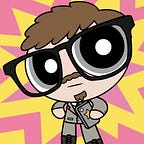Heroes Two (Chang Cheh, 1974)
Chang Cheh’s take on the Fong Sai-yuk character has Alexander Fu Sheng playing him as a good-hearted but dim-witted boob who is quite easily gulled into capturing one of the few survivors of the destruction of the Shaolin Temple, Chen Kuan-tai’s Hung Si-kuan and handing him over to the actual, villainous perpetrators (Manchu troops, naturally) of said destruction. They constitute the two heroes of the title (it’s not a sequel to a movie called Heroes, but an enumeration of protagonists, like with Warriors Two or Brothers Five) as Fong eventually realizes his mistake and undertakes a daring rescue.
I’m a big fan of Corey Yuen’s Fong Sai-yuk movies, in which Jet Li plays him as a happy-go-lucky goofball. Yuen’s films follow a more conventional version of Fong’s story, where he learns his kung fu from his mother who herself learned it from one of the survivors of the Temple’s destruction, putting Sai-yuk two generations removed from the events of Heroes Two. But there are other versions of the Fong Sai-yuk legend: though based on a more or less factual event (the destruction of the Temple by the Qing), his story is as much mythology as history, not unlike the Three Kingdoms stories from a much earlier age, or, on the other side of the globe, the Robin Hood legend. Fu Sheng is a perfect match for this boneheaded version of Fong, his perplexed brow-furrows neatly framed by his arena rock mullet. Chen Kuan-tai gets to play a more traditionally noble figure, though he spends half the movie chained to a wall. His character, in real life, created the Hung Gar fighting style, the one used by Wong Fei-hung and taught to his disciples, one of whom taught the father of Lau Kar-leung (it’s a small kung fu world: Lau would tell Hung Si-kuan’s story in Executioners from Shaolin). He’s idealized here, but otherwise isn’t given much to do. That’s a problem with the plot as a whole: aside from the central case of mistaken identity, not much happens. He gets caught, he gets rescued, everybody fights.
It starts great (in medias res with the burning of the Temple and Chen fighting his way out) and the fight scenes might be the best boxing scenes Lau Kar-leung and Tang Chia coordinated for Chang during their decade-long collaboration (Tang was a student of Yuen Woo-ping’s father Yuen Siu-tien, the small kung fu world grows even smaller), but the film doesn’t have the depth or resonance of most Chang films (in this respect it’s like Duel of Fists), but this is but a small chapter of an epic folk tale. I have high hopes for his 1976 film Shaolin Temple, which hopefully will have a broader scope and delve further into Chang’s psychology of honor and violence while set during the same events.
If you see the same DVD I rented, don’t miss the special feature where Chen and Fu Sheng show off the various forms of the fighting styles they use in the film. It’s pretty neat, and also a precursor to Lau Kar-leung’s distinctive opening credit sequences, with the actors performing against an abstract, dusky red backdrop, as if on an alien, supernatural plane.
